
A dragon is a magical legendary creature that appears in the folklore of multiple cultures worldwide. Beliefs about dragons vary considerably through regions, but dragons in Western cultures since the High Middle Ages have often been depicted as winged, horned, and capable of breathing fire. Dragons in eastern cultures are usually depicted as wingless, four-legged, serpentine creatures with above-average intelligence. Commonalities between dragons' traits are often a hybridization of feline, reptilian, mammalian, and avian features. Some scholars believe large extinct or migrating crocodiles bear the closest resemblance, especially when encountered in forested or swampy areas, and are most likely the template of modern Asian dragon imagery.

In several Bantu mythologies, mokele-mbembe is a mythical water-dwelling entity that is believed to exist in the Congo River Basin. Variously described as a living creature or a spirit, mokele-mbembe's descriptions vary widely based on conflicting purported eyewitness reports, but it is often described as a large quadrupedal herbivore with smooth skin, a long neck, and a single tooth or horn, much like the extinct species sauropods.

The thunderbird is a bird-like spirit particular to North American indigenous peoples' history and culture. It is considered a supernatural being of power and strength.
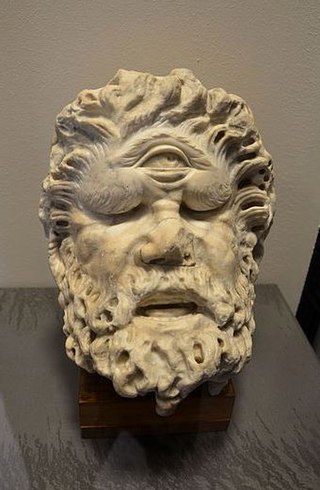
In Greek mythology and later Roman mythology, the Cyclopes are giant one-eyed creatures. Three groups of Cyclopes can be distinguished. In Hesiod's Theogony, the Cyclopes are the three brothers, Brontes, Steropes, and Arges, who made Zeus's weapon, the thunderbolt. In Homer's Odyssey, they are an uncivilized group of shepherds, the brethren of Polyphemus encountered by Odysseus. Cyclopes were also famous for being the builders of the Cyclopean walls of Mycenae and Tiryns.

In Greek mythology, Talos, also spelled Talus or Talon, was a giant automaton made of bronze to protect Europa in Crete from pirates and invaders. He circled the island's shores three times daily.

Walking with Dinosaurs is a 1999 six-part nature documentary television miniseries created by Tim Haines and produced by the BBC Science Unit, the Discovery Channel and BBC Worldwide, in association with TV Asahi, ProSieben and France 3. Envisioned as the first "Natural History of Dinosaurs", Walking with Dinosaurs depicts dinosaurs and other Mesozoic animals as living animals in the style of a traditional nature documentary. The series first aired on the BBC in the United Kingdom in 1999 with narration by Kenneth Branagh. The series was subsequently aired in North America on the Discovery Channel in 2000, with Avery Brooks replacing Branagh.

Pliosauroidea is an extinct clade of plesiosaurs, known from the earliest Jurassic to early Late Cretaceous. They are best known for the subclade Thalassophonea, which contained crocodile-like short-necked forms with large heads and massive toothed jaws, commonly known as pliosaurs. More primitive non-thalassophonean pliosauroids resembled plesiosaurs in possessing relatively long necks and smaller heads. They originally included only members of the family Pliosauridae, of the order Plesiosauria, but several other genera and families are now also included, the number and details of which vary according to the classification used.
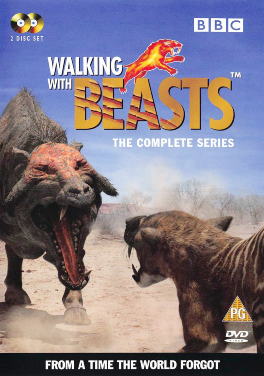
Walking with Beasts, marketed as Walking with Prehistoric Beasts in North America, is a 2001 six-part nature documentary television miniseries created by Impossible Pictures and produced by the BBC Science Unit, the Discovery Channel, ProSieben and TV Asahi. The sequel to the 1999 miniseries Walking with Dinosaurs, Walking with Beasts explores the life in the Cenozoic era, after the extinction of the non-avian dinosaurs, particularly focusing on the rise of the mammals to dominance. The UK version of the series is narrated by Kenneth Branagh, who also narrated Walking with Dinosaurs, and the US version is narrated by Stockard Channing.

Adrienne Mayor is a historian of ancient science and a classical folklorist.

Sea Monsters, marketed as Chased by Sea Monsters in the United States, is a 2003 three-part nature documentary television miniseries created by Impossible Pictures and produced by the BBC Studios Science Unit, the Discovery Channel and ProSieben. Following in the footsteps of The Giant Claw (2002) and Land of Giants (2003), special episodes of the nature documentary series Walking with Dinosaurs, Sea Monsters stars British wildlife presenter Nigel Marven as a "time-travelling zoologist" who travels to seven different periods of time in prehistory, diving in the "seven deadliest seas of all time" and encountering and interacting with the prehistoric creatures who inhabit them. The series is narrated by Karen Hayley in the BBC version and by Christopher Cook in the American version.

Walking with Monsters – Life Before Dinosaurs, marketed as Before the Dinosaurs – Walking with Monsters in North America, is a 2005 three-part nature documentary television miniseries created by Impossible Pictures and produced by the BBC Studios Science Unit, the Discovery Channel, ProSieben and France 3. Walking with Monsters explores life in the Paleozoic era, showcasing the early development of groups such as arthropods, fish, amphibians, reptiles and synapsids. Like its predecessors Walking with Dinosaurs (1999) and Walking with Beasts (2001), Walking with Monsters is narrated by Kenneth Branagh.
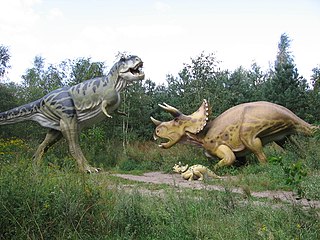
Cultural depictions of dinosaurs have been numerous since the word dinosaur was coined in 1842. The non-avian dinosaurs featured in books, films, television programs, artwork, and other media have been used for both education and entertainment. The depictions range from the realistic, as in the television documentaries from the 1990s into the first decades of the 21st century, to the fantastic, as in the monster movies of the 1950s and 1960s.
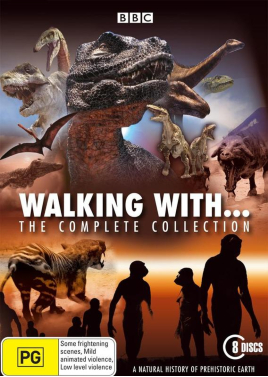
Walking with... is a palaeontology media franchise produced and broadcast by the BBC Studios Science Unit. The franchise began with the series Walking with Dinosaurs (1999), created by Tim Haines. By far the most watched science programme in British television during the 20th century, Walking with Dinosaurs spawned companion material and four sequel series: Walking with Beasts (2001), Walking with Cavemen (2003), Sea Monsters (2003) and Walking with Monsters (2005). Each series uses a combination of computer-generated imagery and animatronics, incorporated with live action footage shot at various locations, to portray prehistoric animals in the style of a traditional nature documentary.
Teutobochus or Theutobochus was a legendary giant and king of the Teutons. Large bones discovered in France in 1613 were claimed to be his skeleton.
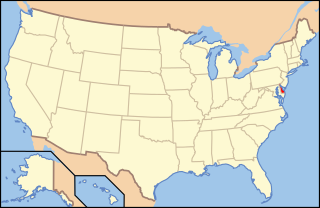
Paleontology in Delaware refers to paleontological research occurring within or conducted by people from the U.S. state of Delaware. There are no local rocks of Precambrian, Paleozoic, Triassic, or Jurassic age, so Delaware's fossil record does not begin until the Cretaceous period. As the Early Cretaceous gave way to the Late Cretaceous, Delaware was being gradually submerged by the sea. Local marine life included cephalopods like Belemnitella americana, and marine reptiles. The dwindling local terrestrial environments were home to a variety of plants, dinosaurs, and pterosaurs. Along with New Jersey, Delaware is one of the best sources of Late Cretaceous dinosaur fossils in the eastern United States. Delaware was still mostly covered by sea water through the Cenozoic era. Local marine life included manatees, porpoises, seals, and whales. Delaware was worked over by glaciers during the Ice Age. The Cretaceous belemnite Belemnitella americana is the Delaware state fossil.
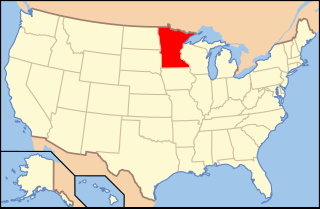
Paleontology in Minnesota refers to paleontological research occurring within or conducted by people from the U.S. state of Minnesota. The geologic record of Minnesota spans from Precambrian to recent with the exceptions of major gaps including the Silurian period, the interval from the Middle to Upper Devonian to the Cretaceous, and the Cenozoic. During the Precambrian, Minnesota was covered by an ocean where local bacteria ended up forming banded iron formations and stromatolites. During the early part of the Paleozoic era southern Minnesota was covered by a shallow tropical sea that would come to be home to creatures like brachiopods, bryozoans, massive cephalopods, corals, crinoids, graptolites, and trilobites. The sea withdrew from the state during the Silurian, but returned during the Devonian. However, the rest of the Paleozoic is missing from the local rock record. The Triassic is also missing from the local rock record and Jurassic deposits, while present, lack fossils. Another sea entered the state during the Cretaceous period, this one inhabited by creatures like ammonites and sawfish. Duckbilled dinosaurs roamed the land. The Paleogene and Neogene periods of the ensuing Cenozoic era are also missing from the local rock record, but during the Ice Age evidence points to glacial activity in the state. Woolly mammoths, mastodons, and musk oxen inhabited Minnesota at the time. Local Native Americans interpreted such remains as the bones of the water monster Unktehi. They also told myths about thunder birds that may have been based on Ice Age bird fossils. By the early 19th century, the state's fossil had already attracted the attention of formally trained scientists. Early research included the Cretaceous plant discoveries made by Leo Lesquereux.

Paleontology in Wyoming includes research into the prehistoric life of the U.S. state of Wyoming as well as investigations conducted by Wyomingite researchers and institutions into ancient life occurring elsewhere.

Paleontology in Arizona refers to paleontological research occurring within or conducted by people from the U.S. state of Arizona. The fossil record of Arizona dates to the Precambrian. During the Precambrian, Arizona was home to a shallow sea which was home to jellyfish and stromatolite-forming bacteria. This sea was still in place during the Cambrian period of the Paleozoic era and was home to brachiopods and trilobites, but it withdrew during the Ordovician and Silurian. The sea returned during the Devonian and was home to brachiopods, corals, and fishes. Sea levels began to rise and fall during the Carboniferous, leaving most of the state a richly vegetated coastal plain during the low spells. During the Permian, Arizona was richly vegetated but was submerged by seawater late in the period.
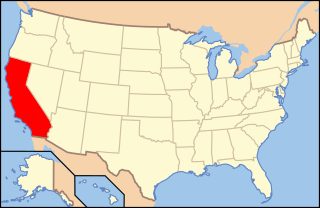
Paleontology in California refers to paleontologist research occurring within or conducted by people from the U.S. state of California. California contains rocks of almost every age from the Precambrian to the Recent.
The Neades were legendary creatures of gigantic size said to inhabit the Greek island of Samos. Their voices were said to be capable of causing earthquakes, and ancient sources report that their bones were put on display by the island's inhabitants.



















